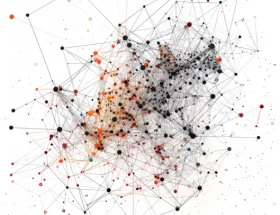The study by Wedel, Pieters, and van der Lans (2023) reviews advancements in modeling eye movements to understand decision-making processes. Eye tracking offers valuable insights into perceptual and cognitive mechanisms, making it a powerful tool for studying how individuals evaluate and make decisions.
Background
Eye movement studies have been instrumental in psychology and behavioral economics, providing a window into how attention and cognition shape decision-making. This review highlights the development of psychometric and econometric models that link eye movements to task complexity and individual strategies. The authors present a framework that considers how task demands and strategic shifts influence gaze patterns.
Key Insights
- Integration of Cognitive and Perceptual Models: The authors outline how recent models combine perceptual inputs with cognitive strategies, offering a nuanced view of decision-making processes.
- Patterns in Eye Movements: The study categorizes how specific gaze patterns correspond to distinct cognitive tasks, shedding light on how individuals prioritize and process information.
- Challenges in Current Models: While the authors emphasize progress, they also suggest that existing models could benefit from addressing limitations, such as accounting for variability in individual decision strategies.
Significance
This review consolidates current knowledge in the field and highlights eye tracking as a valuable methodology for uncovering the complexities of decision-making. By linking eye movements to cognitive and perceptual processes, it reinforces the importance of integrating data-driven models with theoretical frameworks. However, the article would benefit from a more balanced critique of the challenges that researchers face, such as methodological constraints or gaps in existing models.
Future Directions
The authors call for more detailed psychometric approaches to improve the precision and applicability of eye movement models. They suggest expanding research to include diverse decision-making contexts and integrating data from larger populations to enhance generalizability. These efforts could refine the understanding of how cognitive processes adapt to different task demands.
Conclusion
The study by Wedel et al. (2023) serves as a thorough review of recent advancements in modeling eye movements and their relationship to decision-making. It highlights the progress made while acknowledging areas for future exploration. Eye tracking remains a promising tool for advancing theories of cognition and behavior, offering new possibilities for both research and practical applications.
Reference:
Wedel, M., Pieters, R., & van der Lans, R. (2023). Modeling Eye Movements During Decision Making: A Review. Psychometrika, 88(2), 697-729. https://doi.org/10.1007/s11336-022-09876-4










